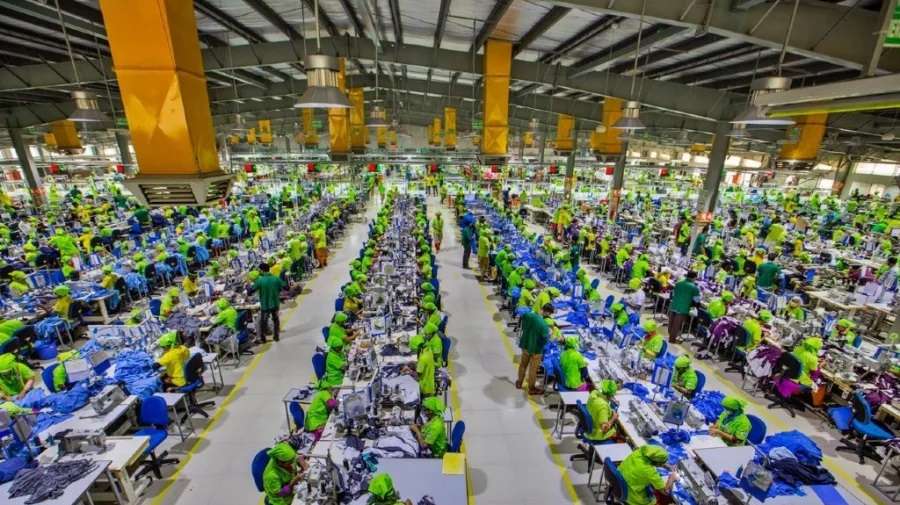
A recent report by CITI by Manoj Sharma, reveals a concerning trend for Indian yarn manufacturers: a significant price disparity between domestic and international prices for key raw materials, PSF (Polyester Staple Fiber) and VSF (Viscose Staple Fiber). The data, compiled for February 2025, highlights a potential challenge to the competitiveness of Indian textiles in the global market. The report, ‘Domestic and International Weekly Price Comparison of PSF and VSF for Month of February 2025’, focuses on the cost competitiveness of Indian yarn manufacturers vis-à-vis their Chinese counterparts, utilizing data from the China Chemical Fibre (CCF).
Study highlights
Significant price difference: The report shows a consistent price difference between domestic prices for MSME (Micro, Small, and Medium Enterprises) spinners and international (CCF) prices, ranging from 14 per cent to 35 per cent across PSF and VSF.
PSF price gap widens: The price difference for PSF is particularly notable, consistently exceeding 34 per cent in February. This indicates a higher cost burden for Indian manufacturers compared to international prices.
VSF also affected: While the price difference for VSF is lower than PSF, it still remains significant, hovering around 14-15 per cent throughout the month.
Exchange rate fluctuations: The report also takes into account the $/Rs exchange rate, which fluctuated slightly during February.
Table: February 2025 CCF prices and difference in domestic and international prices
|
Month |
Material |
Exchange Rate ($/Rs) |
CCF price (cash terms $) |
CCF Price (cash terms Rs) |
Domestic price for MSME spinner (cash terms Rs) |
Difference between domestic and international prices (Rs) |
Price difference as % of international price |
|
1st Week of February |
PSF |
87.46 |
0.853 |
74.58 |
100.5 |
25.92 |
34.75% |
|
VSF |
1.619 |
141.62 |
162 |
20.38 |
14.39% |
||
|
2nd Week of February |
PSF |
86.97 |
0.861 |
74.87 |
100.5 |
25.63 |
34.23% |
|
VSF |
1.62 |
140.9 |
162 |
21.1 |
14.98% |
||
|
3rd Week of February |
PSF |
86.8 |
0.859 |
74.57 |
100.5 |
25.93 |
34.78% |
|
VSF |
1.627 |
141.25 |
162 |
20.75 |
14.69% |
||
|
4th Week of February |
PSF |
87.07 |
0.851 |
74.12 |
100.5 |
26.38 |
35.59% |
|
VSF |
1.627 |
141.63 |
162 |
20.37 |
14.38% |
Note: Domestic PSF prices are for 1.4x38 mm and are based on industry sources, including discounts. Domestic prices are for MSME spinners.
The higher domestic prices for raw materials could significantly impact the profitability and competitiveness of Indian yarn manufacturers. The report highlights that the international prices are not Indian landed prices, and additional costs like CIF (Cost, Insurance, and Freight), BCD (Basic Customs Duty), and other related expenses would further increase the cost of imported raw materials.
Table: January 2025 CCF prices and difference in domestic and international prices
|
Month |
Material |
Exchange rate ($/Rs) |
CCF Price (cash terms $) |
CCF Price (cash terms Rs) |
Domestic price for MSME spinner (cash terms Rs) |
Difference between domestic and international prices (Rs) |
Price difference as % of international price |
|
1st Week of January |
PSF |
85.75 |
0.85 |
72.75 |
99 |
26.25 |
36.08% |
|
VSF |
1.61 |
137.8 |
160 |
22.2 |
16.11% |
||
|
2nd Week of January |
PSF |
86.25 |
0.85 |
73.46 |
99 |
25.54 |
34.77% |
|
VSF |
1.61 |
138.74 |
160 |
21.26 |
15.32% |
||
|
3rd Week of January |
PSF |
86.4 |
0.87 |
75.13 |
100.13 |
24.99 |
33.27% |
|
VSF |
1.61 |
139.14 |
160 |
20.86 |
14.99% |
||
|
4th Week of January |
PSF |
86.44 |
0.87 |
75.13 |
100.5 |
25.37 |
33.78% |
|
VSF |
1.62 |
139.73 |
160 |
20.27 |
14.50% |
Comparing the two months of January and February reveals a mixed trend. For PSF, while the absolute price difference in Rs fluctuated slightly, the percentage difference remained consistently high, indicating sustained cost pressure on Indian manufacturers. In January, the percentage difference for PSF ranged from 33.78 per cent to 36.08 per cent, while in February, it ranged from 34.23 per cent to 35.59 per cent. This suggests that the high cost burden for PSF is not a temporary phenomenon but a persistent challenge.
For VSF, the price difference in Rs decreased slightly in February compared to January. However, the percentage difference remained relatively stable, indicating a consistent cost disparity for this material as well. The exchange rate also played a role. The $/Rs rate was generally higher in February, which could have contributed to the increased domestic prices in Rs.
The report suggests that the Indian textile industry needs to address the price disparity to remain competitive. This could involve exploring strategies to reduce input costs, improve efficiency, and potentially seek government intervention to address the issue.
The CITI report provides valuable insights into the challenges faced by the Indian textile industry. Stakeholders, including manufacturers, policymakers, and industry associations, will need to carefully analyze the data and take appropriate measures to ensure the long-term sustainability and growth of the sector.












